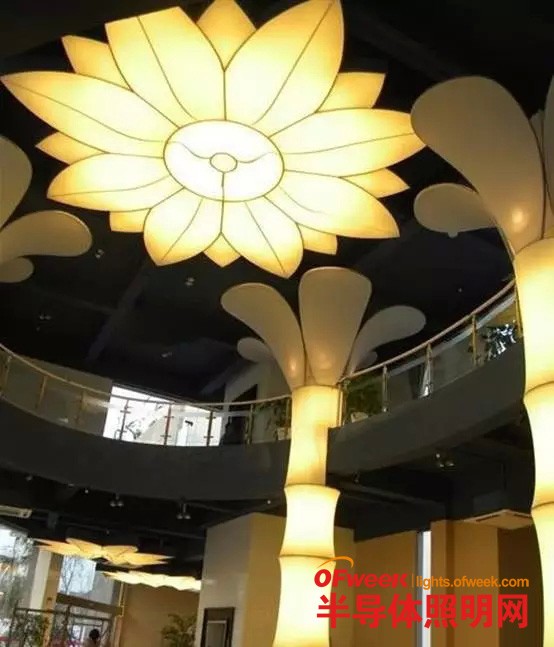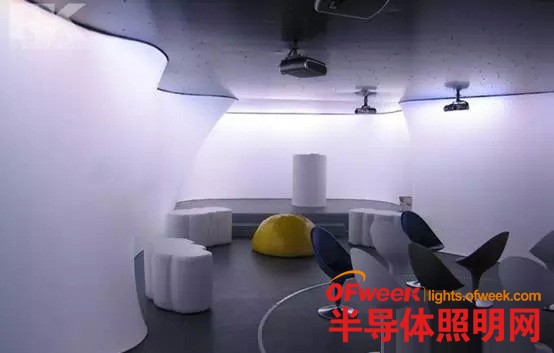How much harm does Blu-ray have? I believe many of us have already understood it. Related industry personnel have also proposed a variety of solutions, today, we will briefly understand the evaluation methods and test tests of Blu-ray!
Analysis of evaluation methods of LED blue light
The blue light hazard of the light source can be characterized by blue light weighted radiance, blue light weighted irradiance, and exposure time. According to the photobiosafety standards IEC62471 and GB/T20145, the blue light of the light source reaches a certain dose and will cause damage to the retina. The spectral radiance of the different wavelengths of the light source is multiplied by the blue light hazard weighting function, and then the wavelength is integrated to obtain the blue light weighted radiance. In order to prevent retinal photochemical damage caused by long-term exposure to blue light, the exposure limit of blue-weighted radiance needs to meet the following conditions:
(Unit J·m-2·Sr-1) (t≤10^4s)......(1)
Where LB is blue-light weighted radiance (W·m-2·Sr-1),
Lλ is the spectral radiance (W·m–2·Sr–1·nm–1),
B(λ) is a blue light hazard weighting function, and its value is shown in the following table:

? λ is the wavelength bandwidth (nm) and t is the radiation duration.
When the eye is looking at the light source for t ≤ 10^4s, the product of LB and time t should not exceed 106J·m–2·Sr–1, which is used to evaluate the short-time light source with large blue-light-weighted radiance for the human eye. The hazard caused by exposure. When the eye is looking at the light source for a long time (t>10^4s), the limit LB≤100W·m–2·Sr–1 is used to evaluate the retinal damage caused by the long-time illumination of the light source with less blue-lighted radiance.
The area of ​​exposure to the retina affects the calculation of exposure limits. This area can be associated with the opposite corner α of the source of the table. The minimum angle at which the retina of a resting eye can resolve.
Minmin = 0.0017 rad. When t>0.25s, since the human eye has a rapid eye movement with a frequency of several Hz, the image of the point source is scattered in an area on the retina, and the angle formed is defined as the effective pair angle αeff. When t>100s, rapid eye movement causes the imaging area of ​​the small light source on the retina to further increase. Therefore when measuring blue-weighted radiance, when
t<100s, αeff=0.011rad;
t>10000s, αeff=0.1rad;
100<t<10000s, αeff=0.0011rad,
For small light sources with a corner angle α < 0.011 rad, the exposure limits of the blue-light-weighted irradiance based on spectral irradiance can be derived from the radiance and the effective diagonal angle of the retina:
(Unit J·m-2) (t≤100s)
Where EB is the blue-weighted irradiance (W·m–2) and Eλ(λ, t) is the spectral irradiance (W·m–2·nm–1). The standard EB is measured at an illumination of 500 lx. This illuminance is typical for general lighting applications. When EB>0.01W·m-2, the maximum allowable irradiation time tmax=100/EBt≤100s.
Table 1 shows the threshold values ​​of the blue light weighted radiance LB, the irradiance EB, the exposure time t, and the effective pair edge αeff corresponding to the blue light hazard level.
Table 1 Parameter thresholds for different blue light hazard levels

Distribution Transformer,Electric Oil Type Distribution Transformer,Oil Type Distribution Transformer,Oil-Immersed Special Transformer
Shaoxing AnFu Energy Equipment Co.Ltd , https://www.sxanfu.com